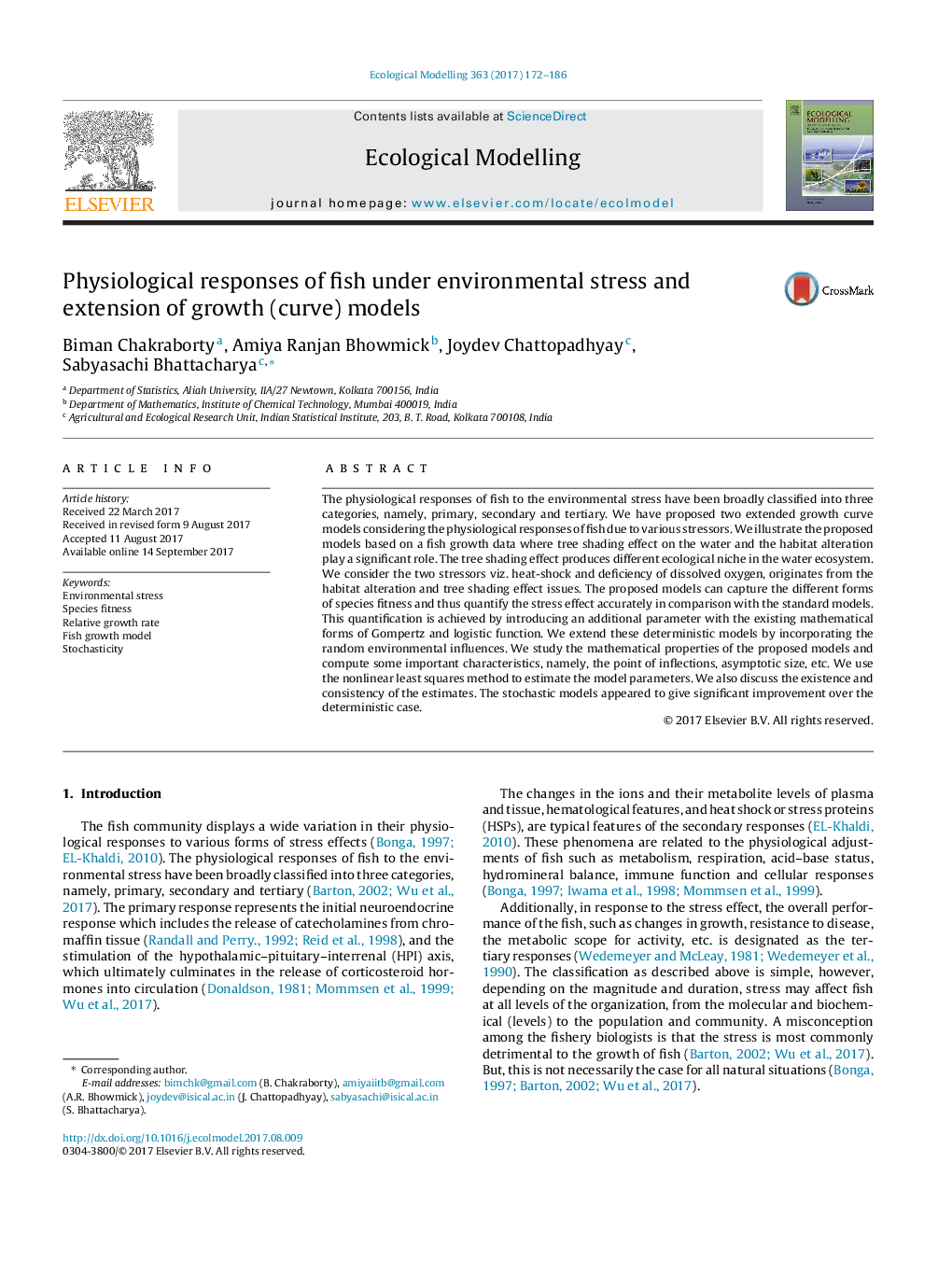| Article ID | Journal | Published Year | Pages | File Type |
|---|---|---|---|---|
| 5742021 | Ecological Modelling | 2017 | 15 Pages |
â¢Proposed flexible growth curve models expressible as function of time and size.â¢Models are used to study the effect of environmental stress on fish growth.â¢Models were extended to stochastic framework and used for real data analysis.â¢Mathematical and statistical properties of the models are elaborately discussed.
The physiological responses of fish to the environmental stress have been broadly classified into three categories, namely, primary, secondary and tertiary. We have proposed two extended growth curve models considering the physiological responses of fish due to various stressors. We illustrate the proposed models based on a fish growth data where tree shading effect on the water and the habitat alteration play a significant role. The tree shading effect produces different ecological niche in the water ecosystem. We consider the two stressors viz. heat-shock and deficiency of dissolved oxygen, originates from the habitat alteration and tree shading effect issues. The proposed models can capture the different forms of species fitness and thus quantify the stress effect accurately in comparison with the standard models. This quantification is achieved by introducing an additional parameter with the existing mathematical forms of Gompertz and logistic function. We extend these deterministic models by incorporating the random environmental influences. We study the mathematical properties of the proposed models and compute some important characteristics, namely, the point of inflections, asymptotic size, etc. We use the nonlinear least squares method to estimate the model parameters. We also discuss the existence and consistency of the estimates. The stochastic models appeared to give significant improvement over the deterministic case.
